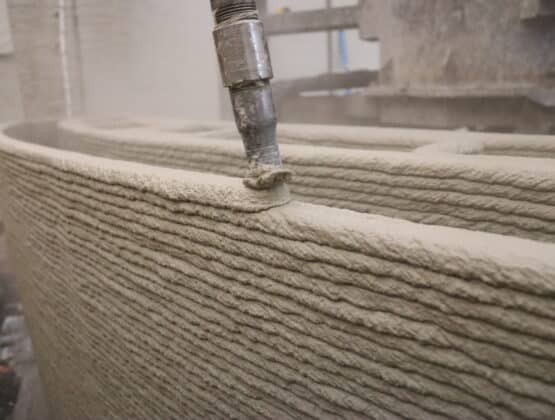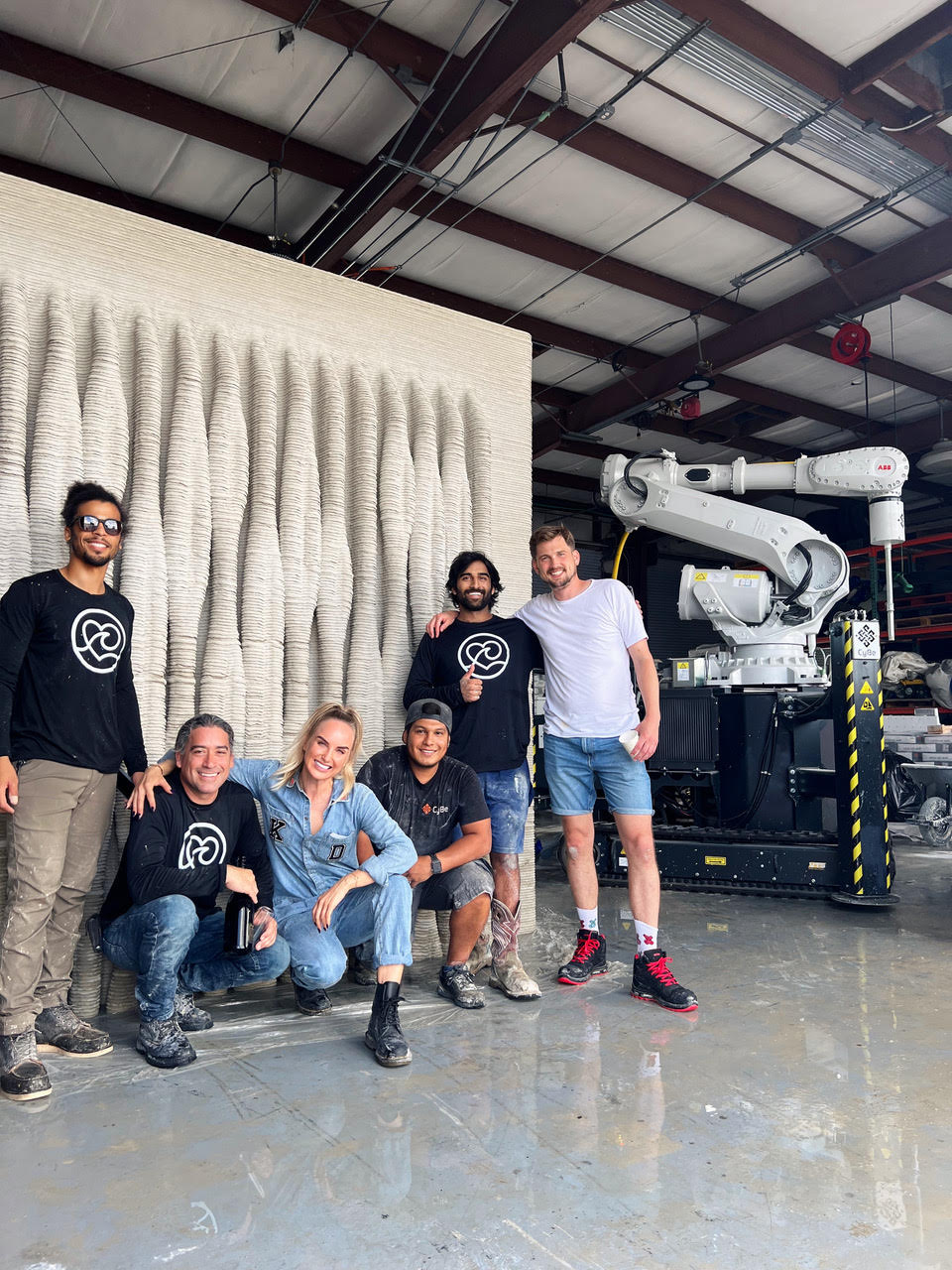The CyBe RC (Robot Crawler)
The CyBe RC (Robot Crawler) is a mobile 3D printer that can transport to any location and maneuver over any terrain. It offers the most efficient solution for on-site printing. It can also be used in a factory setting for precast printing.
As an add-on feature, the CyBe RC’s hydraulic feet stabilize the machine and extend the range of the printer. The rotating nozzle option allows the printer to create complex shapes and textures, a unique feature of 3D concrete printing.


Performance benefits
• Ideal for on-site single-standing construction
• Mobile and maneuverable over all terrain
• Efficient single-unit production
• Superior print speed and performance
• High-quality print strength and adhesion
• Neat printed aesthetic
Speed
At 500 millimeters per second, CyBe printers have the fastest print speed in the market. When paired with the proper mortar, the mortar set-time is optimal and CyBe printers operate at the most efficient speed possible.
Range
Circumference x Height:
5 m x 3.2 m (standard)
With extendable hydraulic feet
5 m x 4.5 m
The CyBe RC’s print area is donut-shaped. Concrete structures are printed around the 3D printer.
Quality
CyBe Mortar has a superior, consistent quality with set-times optimized for the print area. It allows for non-stop, wet-on-wet production for optimal strength and adhesion and excellent aesthetic results.
Tools
CyBe supplies the full package: hardware, software, materials, service, designs, and 10-day training at any location. CyBe’s partners receive all the necessary tools for success.
Strategic non-stop printing
A print strategy ensures that projects are completed as efficiently as possible. When printing on-site with the CyBe RC or off-site with the CyBe G, the construction timeline from setup to finished building is five weeks. The printing is executed in week two, preceded and followed by preparation and finishing steps. Multiple units or buildings within a larger project are built continuously with a one-week gap.


Future-proof construction
CyBe’s 3D concrete printing solution addresses the globalhousing crisis using automation and a new approach to materials. 3D concrete printing allows companies to build faster, more affordably, and in a sustainable way. It brings incredible value to the construction industry.
Application Spotlight
QOROX’s Paremoremo House in Auckland, New Zealand, is currently regarded as the largest 3D-printed house in the Southern Hemisphere and is also the region’s first fully 3D-printed home. The walls of the building were printed with the CyBe RC at an off-site printing facility. To construct this large-scale structure, which consists of 63 wall panels totaling 360 m², it was crucial that the off-site printing process proceed as efficiently as possible. Using our technology, the home was created cost-effectively and sustainably. The exterior walls were later filled with insulation, while the interior walls received a solid fill. QOROX saved costs by integrating cavities in the wall elements for insulation, plumbing, and wiring. The effective use of the CyBe RC allowed QOROX to build the Paremoremo House for less than the standard square meter price, a feat no traditional builders could achieve.

Printing the Paremoremo House
Application Spotlight
Living Seawalls, created by Kind Designs in Miami, not only serve to protect against flooding but also mimic the functions of coral reefs and mangroves. They support biodiversity and enhance water quality. Additionally, they are equipped with sensors that collect 15 parameters of essential data. The CyBe RC is the ideal partner for constructing Living Seawalls. Parametric design enables the creation of their unique shapes, which would be difficult to achieve with traditional concrete construction. Furthermore, 3D printing a Living Seawall takes around an hour to complete, whereas traditional methods would require close to 24 hours.
